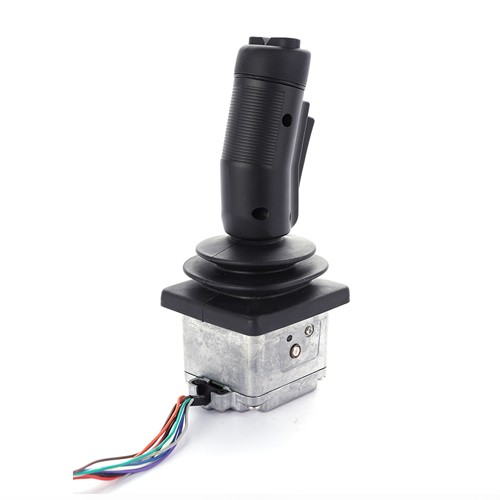In the realm of assistive technologies, continuous innovation is driven by the pursuit of enhancing the quality of life for those with disabilities. A recent study in the field of medical engineering revealed that over 70% of wheelchair users experience significant discomfort and fatigue when operating traditional control systems for extended periods. This startling statistic underscores the pressing need for more user - friendly and ergonomic solutions. The development of an ergonomic finger - tip joystick for wheelchair control systems emerges as a response to this need, aiming to revolutionize the way wheelchair users interact with their mobility aids.

Technical Features of Ergonomic Finger - Tip Joysticks
Precision Control:Ergonomic finger - tip joysticks are engineered to offer precise control. They use advanced sensor technologies, such as Hall effect sensors. These sensors can accurately detect the slightest movement of the joystick, translating it into precise commands for the wheelchair. Whether it's a gentle nudge to move forward slightly or a more significant movement to make a sharp turn, the joystick ensures that the wheelchair responds exactly as the user intends.
Adjustable Sensitivity:Another important feature is adjustable sensitivity. Different users have different needs when it comes to controlling their wheelchairs. Some may prefer a more sensitive joystick that responds quickly to the slightest touch, while others may need a less sensitive one to avoid accidental over - correction. Ergonomic joysticks allow users to adjust the sensitivity according to their preferences. This can be done through software settings on the wheelchair's control panel or, in some cases, through a companion app on a smartphone or tablet.
Comfort - Oriented Design Elements:The physical design of these joysticks also plays a significant role. They often have soft, rubber - coated surfaces that provide a comfortable grip. The shape of the joystick, whether it's a rounded tip or a more angular design, is carefully crafted to fit the fingers comfortably. Additionally, the joystick may be designed to require minimal force to operate, further reducing user fatigue. For example, some models use a spring - loaded mechanism that returns the joystick to its neutral position smoothly, without the user having to exert much effort.
Impact on the Lives of Wheelchair Users
Enhanced Mobility and Independence:The use of an ergonomic finger - tip joystick can significantly enhance a wheelchair user's mobility. With better control, users can navigate through tight spaces more easily, such as narrow corridors in buildings or crowded sidewalks. This new - found ability to move more freely gives them a greater sense of independence. They are less reliant on the assistance of others for basic mobility tasks, which can have a profound impact on their daily lives and self - esteem.
Reduced Fatigue and Discomfort:Long - term use of a wheelchair can be physically demanding, especially when using a non - ergonomic control system. Ergonomic joysticks help alleviate this problem by reducing the physical strain on the user's hands and fingers. This means that users can operate their wheelchairs for longer periods without experiencing as much fatigue or discomfort. As a result, they can engage in more activities throughout the day, whether it's running errands, going to work, or simply enjoying outdoor activities.
Improved Quality of Life:In essence, the ergonomic finger - tip joystick is not just a piece of equipment; it's a tool that can improve the overall quality of life for wheelchair users. By making mobility more comfortable, precise, and independent, it allows users to participate more fully in society, engage in their hobbies, and maintain an active lifestyle.
The ergonomic finger - tip joystick represents not just an incremental improvement but a leap forward in assistive technology. It holds the promise of opening up new possibilities for wheelchair users, enabling them to engage more fully with the world around them.